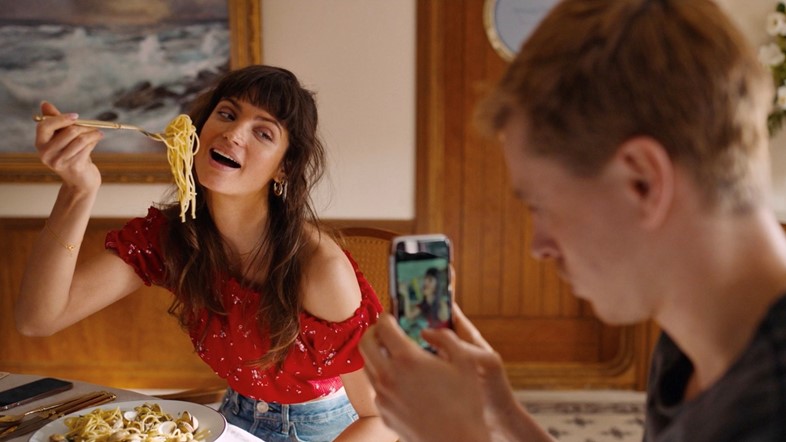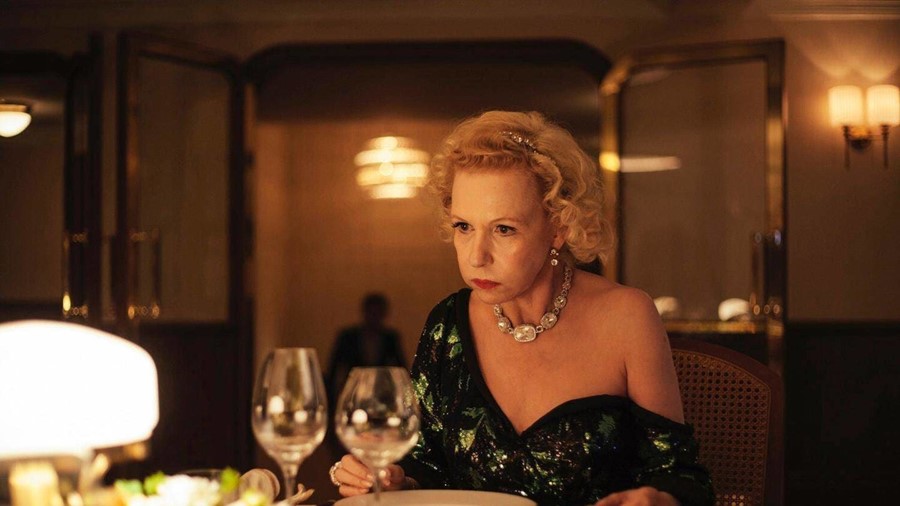“Like the bill scene – that happened with my wife,” the Swedish filmmaker tells AnOther. “It’s one of the moments I’m really ashamed of as an adult man”
“I do think it’s quite crazy, how it’s such a hard thing to talk about, money. It’s such a touchy subject, don’t you think?” posits Carl (Harris Dickinson), in the first act of Ruben Östlund’s latest satirical feature, Triangle of Sadness. “I think it’s unsexy to talk about money,” counters his influencer girlfriend, Yaya. Carl, a model whose recent trajectory sets up the film – following him from a casting to a fashion show, where he’s unceremoniously moved from the front row, to a bill-paying dispute with Yaya moments earlier – is conflicted about gender roles and power imbalances, and uses the debate to voice his frustrations about defining his place.
“The #MeToo movement was happening [when I wrote the film], and I thought it was interesting to look at a male character that has beauty and sexuality as a strong currency,” Östlund tells AnOther. “For me, it was an aspect that hadn’t really been in the discussion, when we talk about our behaviour.” The picture, which won Östlund a second Palme d’Or – following 2017’s The Square – takes its name from a plastic surgeon’s term for the wrinkles that appear between the eyes. Like much of the film, it’s borrowed from real life: a friend of the director’s wife was on a date with a guy who remarked on her triangle of sadness, comforting her that it could be ‘fixed’ in 15 minutes. “Something about that I thought was funny, there was a certain kind of black humour,” notes Östlund.
“I wonder if they’re still dating?” enquires Dolly de Leon. Playing a toilet manager-turned-authority figure Abigail, de Leon quietly arrives in the film’s second act. Now on a hyper luxury yacht – the Christina O, previously owned by Aristotle Onassis – the earlier references to money and power are plainly laid out on board, with passengers such as a Russian oligarch with his wife and his lover, a Swedish tech billionaire, and an elderly couple, Winston and Clementine from Great Britain, who proudly detail making their fortune selling grenades. Woody Harrelson plays the Marx-swaying captain, while the crew of yachties is comprised of a mostly white staff in neat uniforms; Overseas Filipino Workers make up the cleaning force.
The first time Abigail appears on screen she’s attempting to clean Carl and Yaya’s room. “It’s so much fun playing a character who turns everything upside down, ruins how things are naturally flowing,” says de Leon, alluding to the film’s third act, when a savage storm and some pirates leave just a handful of the boat’s contingent alive but shipwrecked on an island, subsequently constructing Abigail’s ascent. “Just the idea of playing this woman who is so underestimated, then all of a sudden is the leader, changing everyone's perception of what power is – I was excited,” she continues.
Like Östlund, much of de Leon’s research arose from reality. “You look left then right, there are Overseas Filipino Workers – I’ve been to Toronto, Austin, LA, New York, and in all places I have met Filipinos working. My own mother was a worker, so I’m very familiar with the culture and the working conditions, their frustrations, and sense of isolation,” she says, observing that eschewing one’s mother tongue can be similarly exhausting. “Working in a different country, not using your own language, that kind of fucks with you. In Greece [shooting Triangle of Sadness] we were very comfortable but I was speaking straight English, because we were all different nationalities. That does something to your head after a while.”

Beyond experience, the role was informed through collaboration, with de Leon and Östlund collectively developing Abigail’s narrative. “When I'm casting, there's an ability that comes from the actor that I fall in love with,” offers the director. “With a character, the only thing I’m interested in is that the back story makes it possible for the actor to do the actions in the script. Very often we make things too simple in cinema, in the way that we are constructing stories, as good guy and bad guy, so the good guy’s good all the time, the bad guy’s bad all the time.” Adds de Leon, “But that’s not true – we’re human, we’re complex.”
Competing with its commentary on class, the film employs a series of comical notes, from the single jar of Nutella helicoptered in for the Russian oligarch, to the cheap shots at the fashion industry in the opening sequences. Perhaps the biggest exaggeration, however, is the amplified toilet humour of the film’s defining dinner scene, which ends in a literal shit show, (the explosive scene was apparently quick to film, by Östlund’s standards, but took six months in the edit). “It’s a combination of a chess game and very private stories,” Östlund later summarises, outlining the film’s primary makeup. “Like the bill scene – that happened with my wife. It’s one of the moments I’m really ashamed of as an adult man.”
